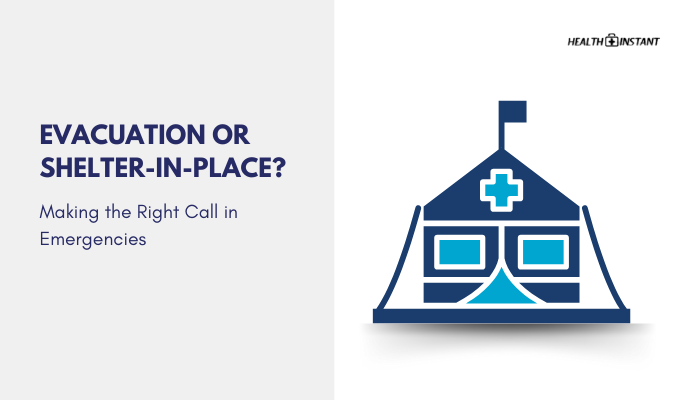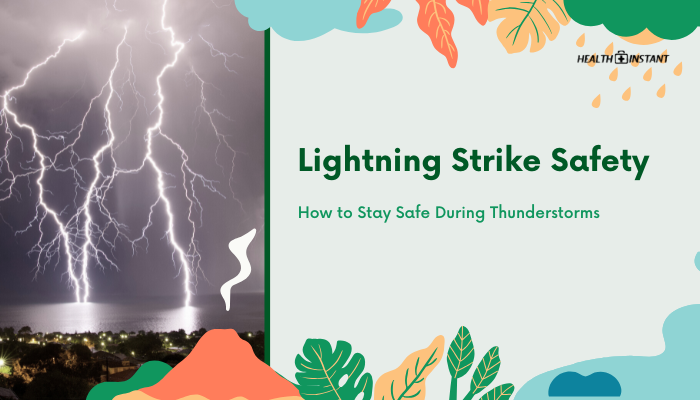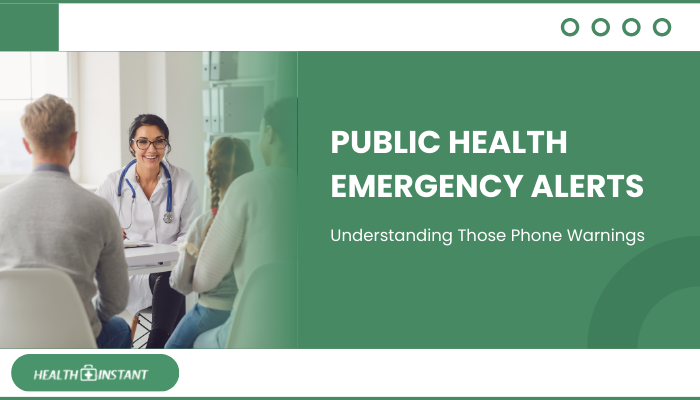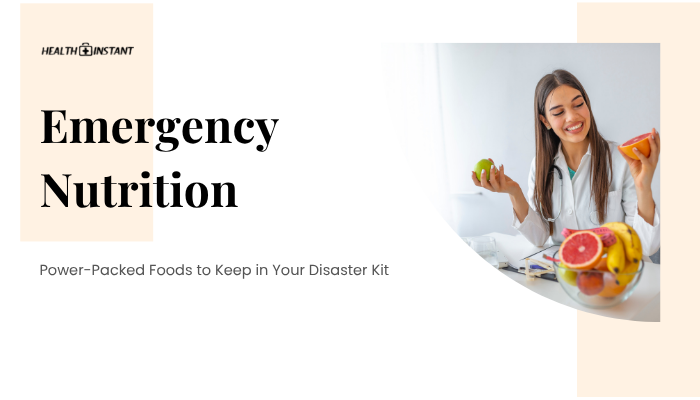Introduction
Disasters—such as hurricanes, wildfires, chemical spills, or floods—pose critical questions about safety. Should you stay at home and await further instructions, or take off to safer ground? The correct choice can differ for each emergency, and making the wrong call can put you at unnecessary risk.
This guide clarifies what “shelter-in-place” entails, when evacuation is more appropriate, and how to prepare for both scenarios. Equipped with this knowledge, you’ll be ready to make a calm, lifesaving decision under pressure.
What Does “Shelter-in-Place” Mean?
“Shelter-in-place” is a directive to remain indoors—at home, office, or another building—rather than evacuating. Reasons may include:
- Airborne Threats: Chemical or radiological incidents where outside air is hazardous.
- Storms: Intense and sudden weather events like tornadoes or flash floods that make travel risky.
- Civil Disturbances: Situations where leaving might place you in harm’s way.
Under “shelter-in-place” orders, people typically seal windows, turn off ventilation if contaminants are airborne, and stay tuned to official updates.
When to Evacuate
Evacuations are often mandated when:
- High Risk of Structural Damage: Approaching wildfire, rising floodwaters, or other conditions likely to destroy buildings.
- Prolonged Hazard: Storm surges or chemical leaks that won’t dissipate quickly.
- Local Authorities Issue Orders: If your city or county instructs you to leave for your own safety.
You may also opt to evacuate preemptively if you see escalating threats—like uncontrollable wildfires or hurricanes intensifying—while routes remain safe.
When to Shelter-in-Place
Scenarios for staying put might include:
- Chemical Release: Hazardous gases or toxins outdoors that require sealed windows and doors.
- Fast-Moving Tornadoes: Unless you’re in a flimsy structure, an immediate safe interior location can be safer than driving.
- Short-Lived Extreme Storms: If local advice suggests roads or overpasses are more dangerous than your sturdy home.
Be prepared to shift from sheltering to evacuation if conditions or official instructions change.
Factors Influencing Your Decision
- Official Guidance
- If local authorities explicitly say “Evacuate immediately,” follow their instructions.
- If local authorities explicitly say “Evacuate immediately,” follow their instructions.
- Home Structure
- Is your dwelling robust enough for the event? In high-wind storms, do you have a basement or interior safe room?
- Is your dwelling robust enough for the event? In high-wind storms, do you have a basement or interior safe room?
- Timing and Mobility
- Assess if you or family members have medical/ mobility constraints that slow exit times.
- Assess if you or family members have medical/ mobility constraints that slow exit times.
- Transportation Options
- Reliable means to leave quickly? Enough fuel in the car? Public transit available?
- Reliable means to leave quickly? Enough fuel in the car? Public transit available?
- Forecast Reliability
- Track reliable weather or hazard data. If a hurricane shifts unexpectedly, reevaluate your plan.
Preparing to Evacuate
- Family Communication Plan
- Have meeting points, share phone numbers, consider texting if phone lines are busy.
- Have meeting points, share phone numbers, consider texting if phone lines are busy.
- Go-Bags
- Essentials: ID, medications, water, non-perishable food, flashlights, phone chargers.
- Essentials: ID, medications, water, non-perishable food, flashlights, phone chargers.
- Pet Carrier and Supplies
- Food, water, leash or crate, proof of vaccinations in case shelters require it.
Preparing to Shelter-in-Place
- Seal Your Space
- For hazardous air: tape over vents, doors, and windows as best you can.
- For hazardous air: tape over vents, doors, and windows as best you can.
- Stock Up
- Keep bottled water, shelf-stable meals, battery-powered radio, and extra medications.
- Keep bottled water, shelf-stable meals, battery-powered radio, and extra medications.
- Maintain Communication
- Phone or radio for updates and battery backups in case power fails.
- Phone or radio for updates and battery backups in case power fails.
- Identify Safe Rooms
- For tornadoes or storms, an interior windowless room on the lowest floor often recommended.
Communication and Alerts
- Local Emergency Alerts
- Sign up for SMS or apps that broadcast official instructions.
- Sign up for SMS or apps that broadcast official instructions.
- Weather Radios
- NOAA (U.S.) or local equivalents can provide round-the-clock bulletins, even if cell networks fail.
- NOAA (U.S.) or local equivalents can provide round-the-clock bulletins, even if cell networks fail.
- Social Media
- Reliable but always confirm official sources to avoid misinformation.
Special Considerations for Families and Pets
- Children: Keep comfort items (toys or blankets), discuss plans in calm ways they understand.
- Elderly or Disabled: Plan extra time or equipment to evacuate.
- Pets: Not all emergency shelters accept animals, so ensure pet-friendly hotels or shelters in your plan.
Conclusion
Choosing between evacuation and shelter-in-place depends largely on official guidance, the hazard’s nature, and your personal circumstances. Ensuring a personal plan covers both possibilities—maintaining go-bags, emergency contact lists, and a knowledge of local resources—lets you pivot swiftly.
Stay updated on the hazard’s progress, align with real-time alerts, and be ready to switch strategies if conditions or official instructions change. Ultimately, preparedness is about adaptability and having the right tools, knowledge, and mindset to keep you and your loved ones safe during any crisis.
References
- Federal Emergency Management Agency (FEMA). (2021). Guidelines for evacuation vs. shelter-in-place decisions.
- American Red Cross. (2020). Home emergency response planning.
- Centers for Disease Control and Prevention (CDC). (2019). Shelter-in-place recommendations and best practices.
- World Health Organization (WHO). (2018). Disaster management in urban and rural settings.
Disclaimer: This content is intended for informational purposes only. Always follow local authority directives during emergencies and consult official channels for real-time updates.







